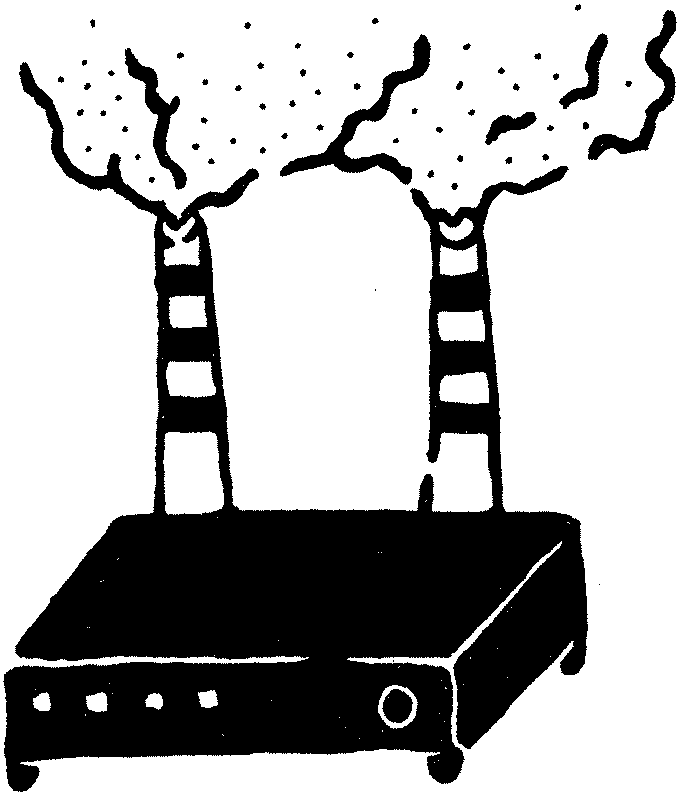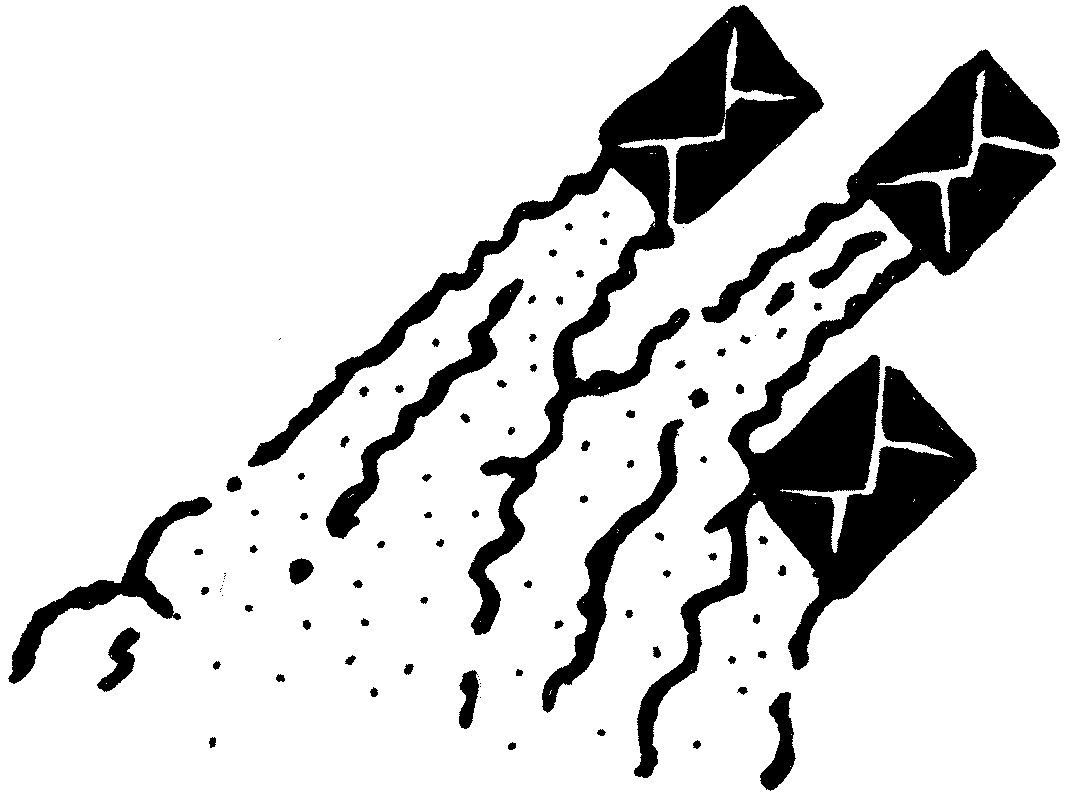Every Internet page emits CO2
If you care about the environment, please print this article.
Norma,
This article was originally published in December 2018. At the time, the “solar” version of Low Tech Magazine 1 had set a new standard, spurring the interest of many others on the subject. Starting from websitecarbon.com 2 – which was also published in late 2018 and was mentioned, among others, by Danny van Kooten in a post from early 2020 3 about his popular WordPress plugins – and Kinsta, which published an article on websites’ emissions in January 2021. 4
But let’s consider an example that raised a certain mediatic commotion. On 8 February 2021, Formafantasma, 5 an Italian design duo working out of Amsterdam, updated their website. The news was picked up by Dezeen 6 and Artribune 7 among others, repeating the claim boasted on the website itself: “designed to minimise the energy consumption and CO2 emissions that result from navigating the Internet.” 8
“The interface – the presentation goes on – uses system typefaces (Arial and Times New Roman) to avoid unnecessary HTTP requests and it is available in dark mode, following the OS colour scheme’s preference by default, thus reducing screen brightness and energy consumption – especially in mobile use where OLED screens are most common.”
Let’s forget about the complexity of energy consumption on OLED screens, and about factors such as brightness settings and RGB values themselves: 9 it’s still difficult to imagine users spending so much time on Formafantasma’s website that they would notice a quantifiable positive impact in terms of battery.
Putting aside the use of system fonts too – an issue we already wrote about in Nothing special – what matters here is the claim about reduced HTTP requests because, as many noted in their comments to the article on Dezeen, 10 Formafantasma’s website does not honour it.
The homepage makes 11 requests: on top of the HTML page, there are two CSS sheets, one svg icon (which, due to a bug, is constantly requested every time the bottom of the page is reached), and seven JavaScript files, including jQuery which amounts to 33kB on its own. Furthermore, if you don’t have a tracking blocker, the page downloads Gtag which not only sells your navigation data to Google, but also takes another 100kB+: basically twice as much as the website itself. And the homepage does not contain images of any past projects: the “works” page does much worse, with 124 HTTP requests and 9MB transferred in total. Note that, as the image download is based on the scroll position and not on the user actually opening a project, all you have to do is scroll to the bottom of the page to reach those 9MB, even without seeing a single image.
In contrast, the homepage of Build in Amsterdam 11 (picked at random among websites from Formafantasma’s same city) boasts no eco-friendly idealism and in fact seems to have made glitzy effects its signature, yet makes a total 28 HTTP requests for 5MB transferred.
Another similar case is Organicbasic 12, which is proud to present itself as a “low-impact website” with a whole page dedicated to prove how tangible and sincere their commitment is. Too bad the website is based on Nuxt.js, a framework with hundreds of megabytes of JavaScript server-side, with 1MB of files transferred just for the manifesto in which they highlight how important it is to load only “crucial” resources (with every bullet point, of course, highlighted by a “crucial” svg icon).
Even the Kinsta article we mentioned above 13 weighs 6.6MB with over 100 requests. After all, referencing our previous article on the accessibility of Internet sites, none of the pages analysed here passes the WCAG tests. We leave it to readers to draw their own conclusions.

“Please consider the environment before printing this email” used to be a common suggestion, written in green, at the bottom of any email. There are different variations of it, but many come from thinkbeforeprinting.org, 14 a 2009 website. “We don’t want to stop people printing” – says Ink Factory, the printer cartridge seller that promoted this campaign. “We simply think that sometimes, people, and not everyone, need reminding that wasting paper, ink and toner doesn’t make economic or environmental sense.”
A harmless message, like many others that knock the existence of paper documents in favour of completely digital operations. “Save paper – save trees”, yet the Internet has a remarkable energy impact too.
The Internet emits CO2 – and more than you might think. Storing data on servers, processing them, answering users’ requests, having the infrastructure required to transfer data, antennas, repeaters, routers, signal amplifiers, CDNs, 15 modems, all the way to the energy used by the final device to view the page. And more: there is also the cost of the equipment itself, and of its constant renewal in the race for technological advancement, encouraged by the increased will to function in the digital world.
All in all, transferring 1GB of data via the Internet generates between 2 and 3 kilograms of CO2 emissions according to estimates by Emerge 16 and Energuide. 17 Even if the estimates were lower, say at around 29 grams per GB, 18 with the amount of exabytes (1 million GB) of data that are created every day the long-term result should still alarm the public at least as much as the need to reduce car fuel consumption.
But why not just remind people to not print emails, right? The signature mentioned above, as proposed in the form of a gif image with green text, weighs approximately 3kB. It would take 300,000 emails to get to 1GB and, therefore, to the resulting estimate of CO2 released: definitely irrelevant, except over 281 billion emails are sent every day. 19 If each one contained that harmless little environmental message in the form of an image, we would have 800,000GB transferred up to two times (once for sending, once for reading) and therefore a minimum of 23 tons of CO2 generated. Unlike an email that ends up in the trash, at least paper can be recycled.

“Greenwashing”, hiding behind a façade of environmentalism. Claims not truly reflected in programming, at levels where average users are not able to make an assessment. And although it is true that not using a car at all is always better than owning a new ecological one, if this or other websites must exist, we should at least wonder whether their claims are confirmed by actions.
The first version of this page made 10 HTTP requests for a total of 128kB transferred; a recent overhaul of the site has brought the article down to 4 requests and 40kB transferred in total – basically only text and related illustrations. Unfortunately, the same is not true for the other sites we mention – nor for some of those signed by Norma: but in recent years, we have always paid attention to reduce images’ and videos’ weight considerably, and to avoid heavy JavaScript libraries such as jQuery, compressing the resources we actually require anywhere possible.
The truth is, today, every single Internet page weighs 3MB on average: 20 a figure that increased almost four-fold in the past decade. Leaving aside the widespread use of web services with high data transfer such as movie streaming, video calls and video games on the cloud, if we think about normal web pages, is the content so much better than in 2008 that they justify their energy abuse?
The growing interest in complex pages with high video and image content does not help, especially considering that Google does not penalise but rather favours pages that include videos. Rationalising the use of the network is primarily up to designers and programmers: so it would take an act of responsibility on their part to stop designing websites with heavy background photos or other processor-intensive functions that do not add content, even worse if they do so in the name of fake environmentalism.
While well aware that these experiments and these words are totally unfair in the perspective of Facebook app updates that force millions of users to download almost 200MB 21 weekly, and for new functionalities nobody asked for, we still believe it is sensible to prove how every choice has a tangible impact, even in the digital, virtual dimension.

-
1
Kris De Decker: “How to Build a Low-tech Website?”. Low Tech Magazine, September 2018. (lowtechmagazine.com)
↩︎ -
2
Website Carbon Calculator. “How is your website impacting the planet?” (websitecarbon.com)
↩︎ -
3
Danny van Kooten: “CO2 emissions on the web”. February 2020. (dannyvankooten.com)
↩︎ -
4
Tom Greenwood: “Greening the Web: How We Can Create Zero Carbon Websites”. Kinsta Blog, January 2021. (kinsta.com)
↩︎ -
5
FormaFantasma. (formafantasma.com)
↩︎ -
6
Jane Englefield: “Formafantasma redesigns website to reduce pollution connected to the internet”. Dezeen, February 2021. (dezeen.com)
↩︎ -
7
Giulia Mura: “La catastrofe come possibilità. Intervista a Formafantasma su ecologia, design, climate change”. Artribune, February 2021. (artribune.com)
↩︎ -
8
FormaFantasma: “Website Project”. (formafantasma.com)
↩︎ -
9
Chris Burns: “Google’s big Android battery ‘oops’ and future Dark Modes”. SlashGear, November 2018. (slashgear.com)
↩︎ -
10
Jane Englefield. Dezeen. Ibid.
↩︎ -
11
Build in Amsterdam. (buildinamsterdam.com)
↩︎ -
12
Organic Basics: “The Low Impact Website”. (organicbasics.com)
↩︎ -
13
Tom Greenwood. Ibid.
↩︎ -
14
Think Before Printing. (thinkbeforeprinting.org)
↩︎ -
15
CDN: Content Delivery Network. See Wikipedia. (wikipedia.com)
↩︎ -
16
Julian Pscheid: “Does Irresponsible Web Development Contribute to Global Warming?”. Emerge, updated in June 2020. (emergeinteractive.com)
↩︎ -
17
“Do I emit CO2 when I surf the internet?”. Energuide, updated in January 2021. (energuide.be)
↩︎ -
18
George Kamiya: “The carbon footprint of streaming video: fact-checking the headlines”. IEA, December 2020. (iea.org)
↩︎ -
19
Heinz Tschabitscher: “How Many People Use Email Worldwide?”. Lifewire, updated in June 2019. (lifewire.com)
↩︎ -
20
“The average web page is 3MB. How much should we care?”. SpeedCurve, August 2017. (speedcurve.com)
↩︎ -
21
u/dom_pom: “Facebook App is now over 290 MB big according to App Store update window. I remember the time when it was around 100 MB and I don't see any new features giving this significant increase a reason.. but why?”. Reddit, January 2017. (reddit.com)
↩︎